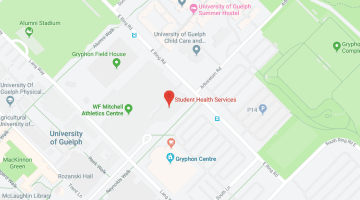
What is a rotator cuff tear?
The rotator cuff is composed of four different muscles: 1) subscapularis; 2) supraspinatus; 3) infraspinatus; 4) teres minor. These muscles all originate from the shoulder blade, and attach onto the upper arm bone, forming a ‘cuff’ that surrounds the ball-and-socket joint. The shoulder joint is much like a golf ball sitting on a tee; this allows for a lot of movement, but also means that the joint isn’t very stable. The rotator cuff muscles help to stabilize the joint and keep the ball centred in the socket throughout movement.
It is possible for one or more of these tendons to become torn. The majority of tears occur in the supraspinatus tendon, but can occur in any of the four tendons. Tears may be described as either partial- or full-thickness.
Partial-thickness rotator cuff tears
With a partial-thickness tear of the rotator cuff (also known as an incomplete tear), the tendon is damaged but part of the tendon remains intact and attached to the bone – much like a rope that is fraying.
Full-thickness rotator cuff tears
With a full-thickness tear of the rotator cuff (also known as a complete tear), the tear goes all the way through the tendon. There is essentially a hole through the tendon and it is no longer fully attached to the bone.
How did I get a rotator cuff tear?
Most often, rotator cuff tears begin with wear and tear due to the general aging process. Therefore, those over the age of 40, and especially those who do a lot of repetitive motions (either for work or sport), are more likely to suffer from this kind of injury. When we age, the tendons of the rotator cuff suffer from decreased blood supply which means the body’s ability to repair the tendons is impaired. Over time, this degeneration can lead to “fraying” of the tendon, and ultimately a tear.
Tears can result from trauma such as a sports injury, lifting something that is too heavy, or falling down on your outstretched arm. When a younger individual suffers from a rotator cuff tear, it is more often a result of a trauma.
Symptoms of a rotator cuff tear
Symptoms of a torn rotator cuff may include, but are not limited to:
- Pain and weakness with raising the arm overhead (e.g. difficulties doing your hair, putting things away in a cupboard)
- Difficulties reaching behind your back
- Pain in the shoulder at rest and at night (especially when lying on that side)
- Pain and weakness with lifting/pulling with that arm
- Decreased range of motion of the shoulder
- Clicking/popping when moving the shoulder
- Pain may radiate down the arm towards the elbow
If the tear is a result of trauma, it is more likely that you will experience immediate, more intense pain and weakness. You may even hear or feel a snapping sensation in the shoulder at the time of injury.
Tears that develop slowly from prolonged wear and tear may only cause mild pain initially, but then become more painful as time progresses.
It is also possible to have a tear and not have any pain, but you may still notice some weakness in the shoulder with certain activities.
How is a rotator cuff diagnosed?
A physiotherapist will first ask you questions about your shoulder pain to get a clearer picture of how it started and to develop a hypothesis of what may be causing the pain. They will then observe your shoulder range of motion, the quality of your motion, your strength, and your posture. There are also several special tests that can be performed in an attempt to determine if your rotator cuff is torn. Based on the findings of this assessment, the physiotherapist can then work with you to develop an appropriate treatment plan to help settle your symptoms, maintain your mobility, and strengthen any deficiencies.
Ultrasounds and MRI’s are also used to diagnose rotator cuff tears. These need to be ordered by your doctor. It is not necessary to have these images prior to starting physiotherapy. Oftentimes there is a long wait to get an appointment for either an ultrasound or MRI and it is better to start physiotherapy sessions sooner rather than later. Even if there is a tear, it is important to start physiotherapy as soon as possible in order to avoid developing a frozen shoulder.
RETURN TO THE PHYSIOTHERAPY HOMEPAGE [2]
